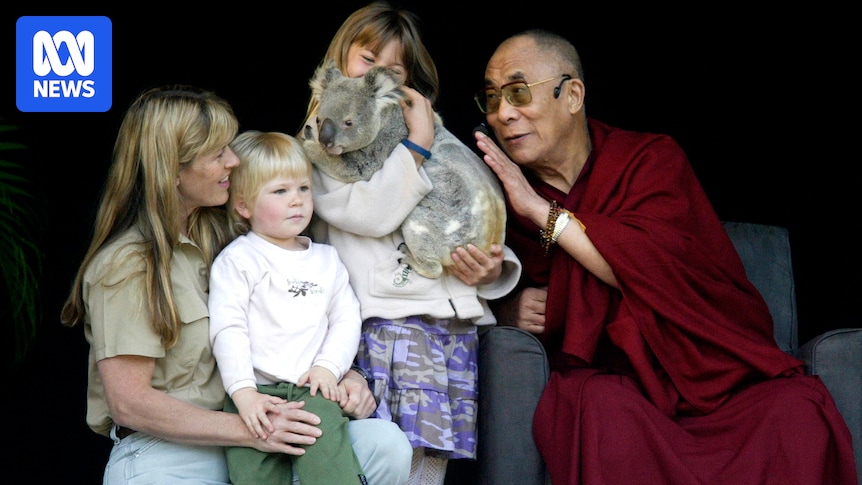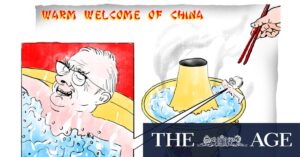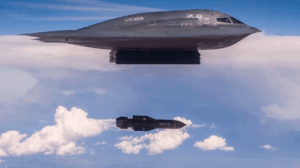
The 14th Dalai Lama has celebrated his 90th birthday with a momentous announcement regarding the future of Tibetan Buddhism. On Wednesday, His Holiness declared via video message that the institution of the Dalai Lama would continue after his death, dispelling rumors that he might be the last in his lineage. This announcement not only reassured his followers but also sent a clear message to political forces in Beijing.
This week, Tibetans and Buddhists worldwide have gathered to celebrate this milestone and honor the Dalai Lama, a long-time advocate for the Tibetan people. Appointed to Tibet’s highest spiritual role at the age of two, he has spent nearly a century navigating the complex political landscape between Tibet and China, despite living in exile for 66 years. His influence has been instrumental in bringing Tibetan Buddhism into the global spotlight.
The Journey from Taktser to Global Influence
According to Tibetan Buddhism, Dalai Lamas are spiritual leaders and protectors of Tibet. When a Dalai Lama dies, the process of identifying his reincarnation begins, a task that can take years. After the 13th Dalai Lama’s death in 1933, a regent was appointed until a successor was found. Search parties eventually discovered a boy named Lhamo Dhondup in the small village of Taktser in northeastern Tibet. After undergoing spiritual tests, he was confirmed as the 14th Dalai Lama, Tenzin Gyatso.
The Dalai Lama began his monastic education at five, studying a range of subjects from Tibetan Buddhist philosophy to medicine. Despite his status, he was treated as an “ordinary young monk.” In 1950, when the People’s Republic of China invaded Tibet, the 15-year-old Dalai Lama was thrust into the role of head of state. By 1951, under duress, Tibetan representatives ceded control of Tibet to China.
A Perilous Escape and Exile
In the late 1950s, tensions between Chinese and Tibetan representatives escalated, leading to the 1959 Tibetan Uprising. Fearing for the Dalai Lama’s safety, Tibetans staged protests in Lhasa, which were violently suppressed by the Chinese army. During this turmoil, the Dalai Lama disguised himself as a soldier and fled to India, where he was granted asylum in 1959. In 1960, he established a base in Dharamshala, India, and many Tibetans followed him into exile.
Reflecting on his life, the Dalai Lama has said,
“At the age of 16, I lost my freedom. At the age of 24, I lost my country.”
Despite these challenges, he has continued to advocate for Tibetan culture and rights from his government in exile.
The Middle Way Approach
During the Cultural Revolution, the Chinese government sought to eradicate capitalist ideology, resulting in the destruction of Tibetan monasteries and the death of many Tibetans. From exile, the Dalai Lama promoted the Middle Way Approach, advocating for Tibetan autonomy within China rather than full independence. This proposal aimed to protect Tibetan rights and foster harmony, but it has been met with resistance from Chinese leadership.
Critics argue that the Dalai Lama’s approach falls short, advocating instead for full independence. Nevertheless, the Dalai Lama has persisted in promoting the Middle Way, despite the Chinese Communist Party’s (CCP) refusal to entertain the plan. The CCP maintains that Tibet is an “inalienable part of China” and demands that the Dalai Lama “thoroughly correct” his views.
Buddhism on the World Stage
Throughout his exile, the Dalai Lama has traveled extensively, meeting with global leaders and promoting interfaith dialogue. His efforts have reshaped the image of the Dalai Lama from a mystical figure to a globally recognized spiritual and political force, a role solidified by his Nobel Peace Prize win in 1989. His teachings on compassion and wisdom have influenced many around the world, contributing to the rise of Buddhist practitioners globally.
Despite his declining health, the Dalai Lama remains a significant figure for Tibetans. Tenzin Choegyal, a Tibetan-Australian musician, notes,
“For a Tibetan, he’s a father, a mother, a leader of the nation and also the spiritual leader as well.”
The Dalai Lama’s presence continues to inspire hope and resilience among Tibetans.
The Future of the Dalai Lama Institution
In his recent announcement, the Dalai Lama confirmed that the institution would continue through reincarnation, with his charitable trust having “sole authority” to recognize his successor. This decision counters any attempts by the Chinese government to interfere in the succession process. The Dalai Lama has expressed hope for future negotiations over Tibetan autonomy, believing that a more open Chinese society could lead to a mutually agreeable solution.
While the Tibetan government in exile remains unrecognized internationally, the Dalai Lama’s legacy endures. His commitment to peace and cultural preservation continues to inspire Tibetans and Buddhists worldwide, as they look to the future with cautious optimism.





